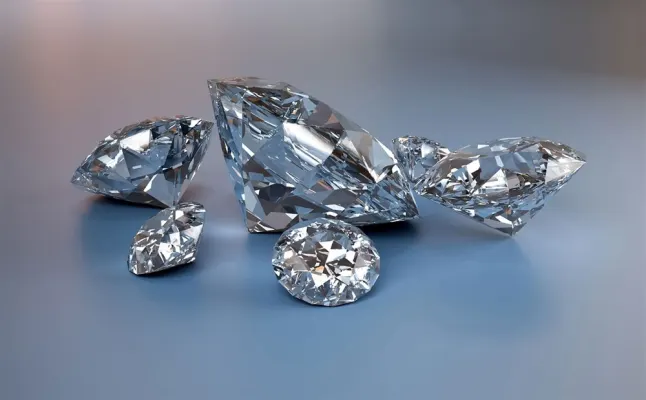Each and every diamond ring is as individual as the person wearing it. One of the most noticeable ways that rings can differ from each other is ring shapes. Rings can come in as many shapes as there are stars in the sky, but what are the most popular?
What Is a Faceting Style?
A key component to understanding ring shapes is the different faceting styles. Gems that have been cut and polished have facets. The word facet is derived from the French word “facette” that translates in English to “face”. This refers to every flat side, or facet of the stone. While all facets are flat, they can have different shapes and arrangements. This is what dictates a faceting style. A gem with square and rectangular facets that sit side by side like a brick wall is a “step cut”. Meanwhile, a stone with primarily triangle and kite shaped facets is a “brilliant cut”. But wait there’s more! You could also find a mixture of both a brilliant and step cut, in which case, you would refer to it as a “mixed cut”. Why is this important? Although facets are small, faceting styles greatly change the appearance of a gem. Of the ten gem cuts that are in this article, there are two step cuts (emerald and asscher) with all the others being brilliant cuts.
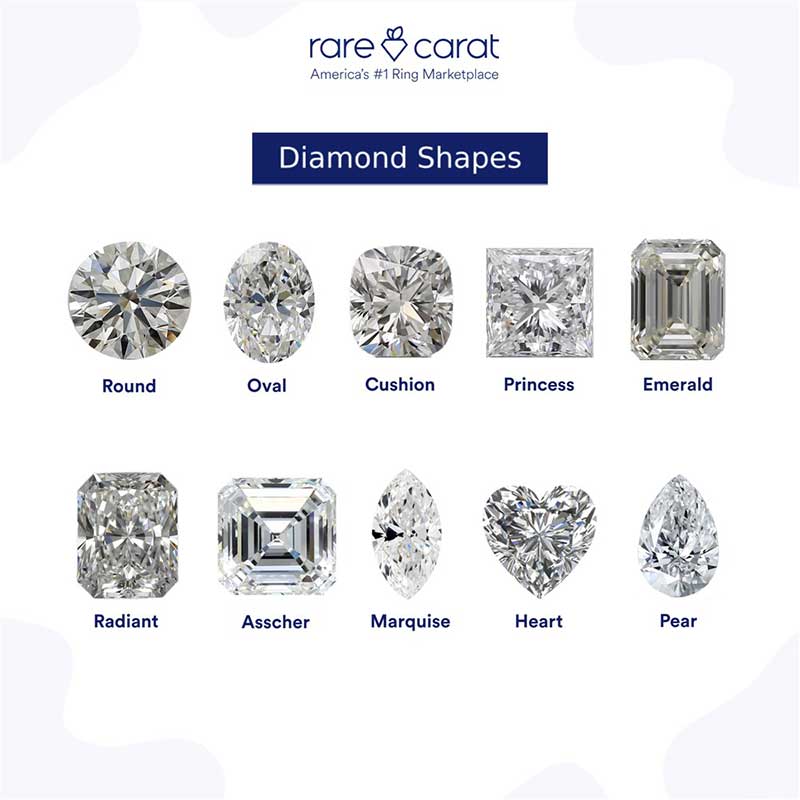
Round Brilliant
Out of all the shapes a diamond can be cut into, round brilliants are the most common. The reason being that this cut is scientifically engineered to be the pinnacle of diamond beauty, and that’s a fact! Every angle and facet is purposefully positioned to accentuate every aspect of a diamond that people find alluring. In other words, this cut is the height of diamond beauty.
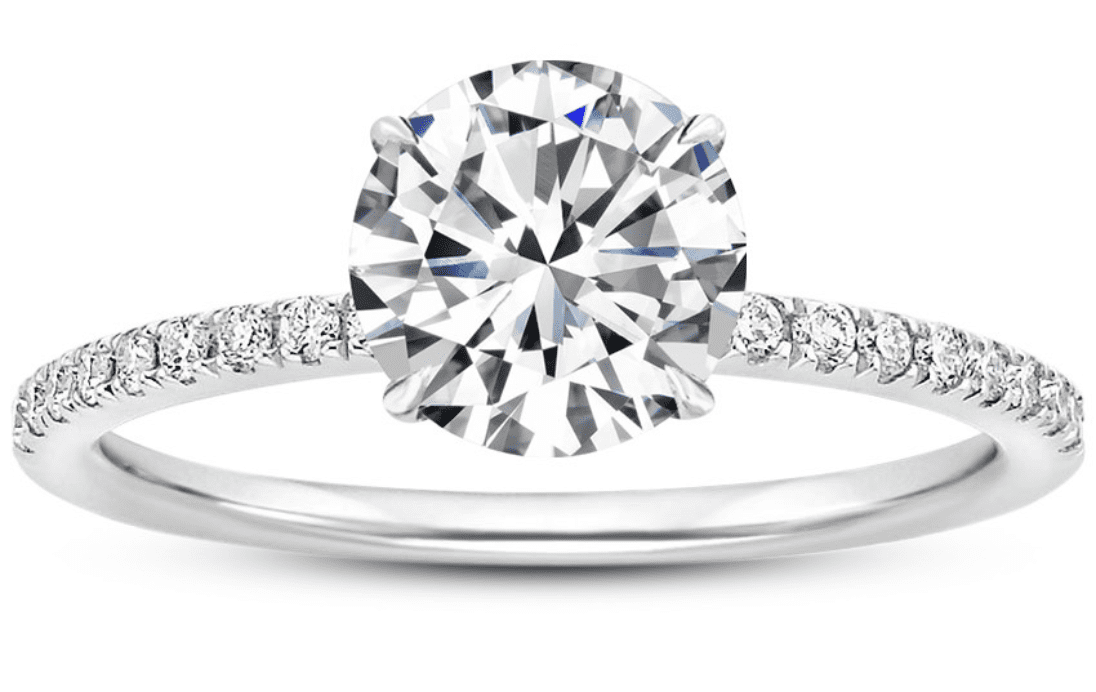
Oval Brilliant
Oval brilliants are a great choice for someone looking for a rounded ring shape but want a cut that’s more individual than the round brilliant. The oval cut exudes an air of gentle elegance and the elongated nature of the cut is considered flattering on the finger. Although the concept of an oval isn’t anything new, the 57 or 58 facet version that is the diamond industries standard wasn’t coined until the mid 1950s. The biggest benefit to this cut is because of its shape, the carat size appears to be higher than in other cuts. For instance, a 1 ct oval brilliant will appear larger than a 1 ct round brilliant.
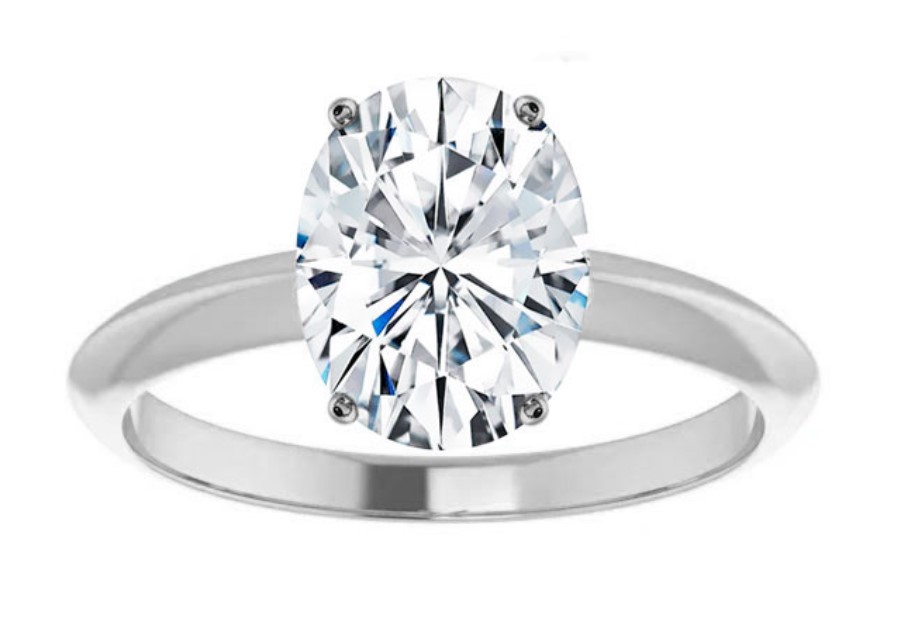
Princess Cut
If you were to take a poll of the most desirable ring shapes, the princess cut will always be mentioned. Although, depending on who you ask, the princess cut is either the number two in popularity to the round brilliant, or it’ll take the third place prize. Any way you slice it, the princess cut is in the top three of most popular ring shapes. The dramatic and bold silhouette of the princess cut has made quite the impact in modern jewelry and therefore is a trendy piece to own. Another reason for its recent climb in popularity is the lower amount of waste as a byproduct of this cut. In short, the princess cut is sustainable and stylish!
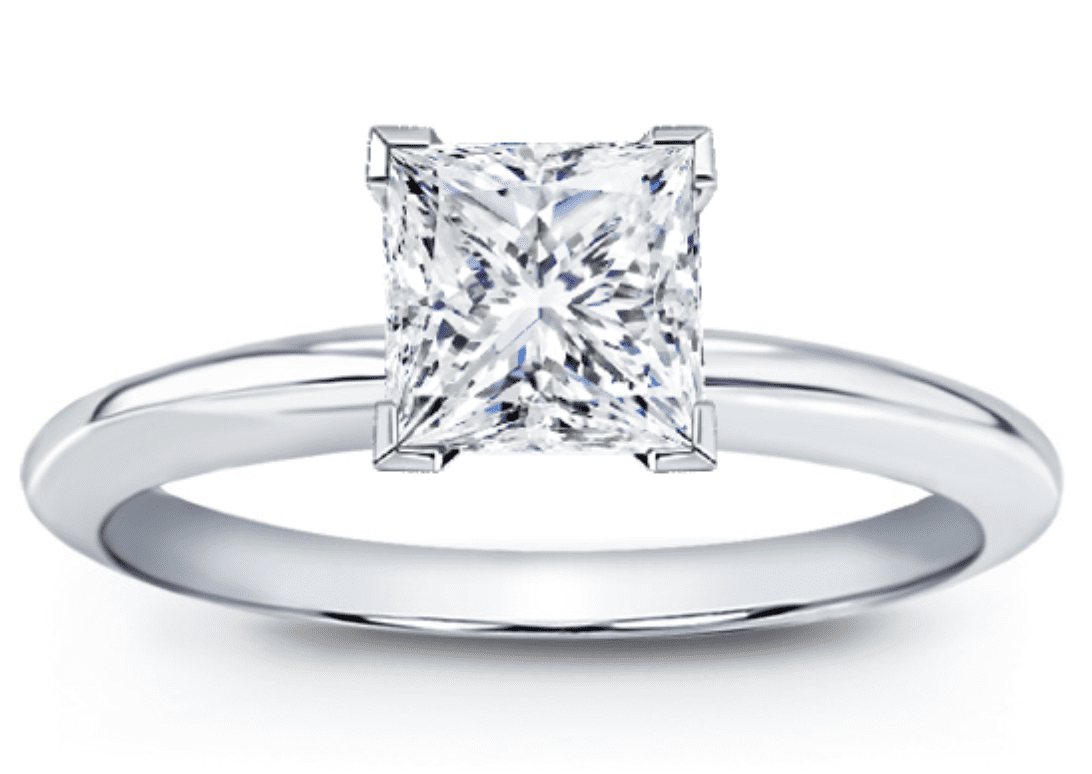
Emerald Cut
Emerald cuts have one of the longest histories out of all the ring shapes. The emerald cut started as a very simplistic version of what we have today in the 1500s, changing bit by bit to become the emerald cut everyone recognizes today. This timeless cut finds its beauty in simplicity, the emerald cut may not be the sparkliest but it is brilliant in other ways. The angular shape of the emerald cut possesses the same stylish charm that captivates lovers of the princess cut. Since the emerald cut is a step cut, it’s easier to see into the stone and therefore it’s recommended to have a higher clarity diamond fashioned into this ring shape. Following the princess cut’s lead, pronounced angles make the emerald cut a modern splendor.
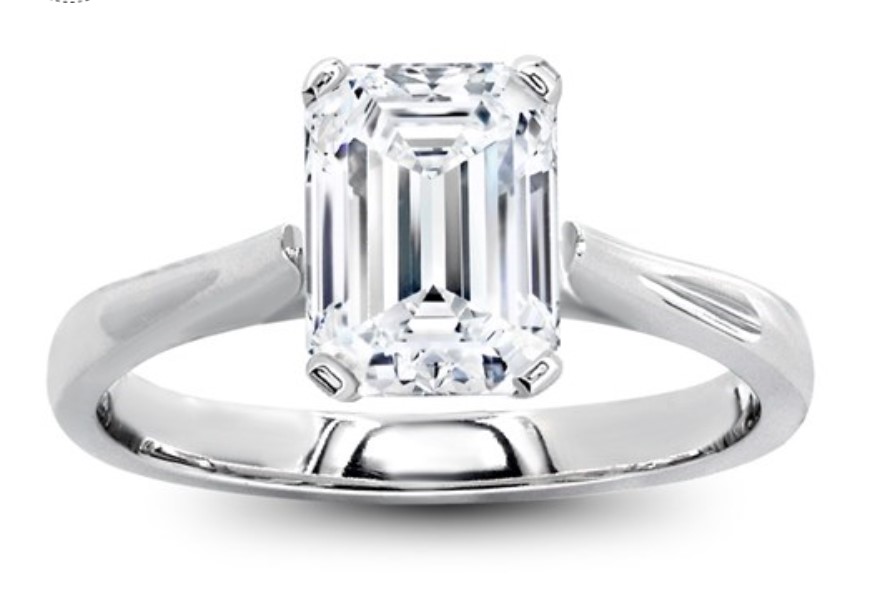
Marquise Cut
The marquise cut was inspired by a beaming smile. This unique cut of the marquise is another that is considered flattering for the finger. This 18th century France born cut isn’t the most popular, but that makes it the perfect ring shape for someone who wants to be out of the ordinary. Keep in mind that this cut is at high risk of breakage. Although the points at each side are elegant and a statement for sure, they can chip easily if you don’t take care of them.
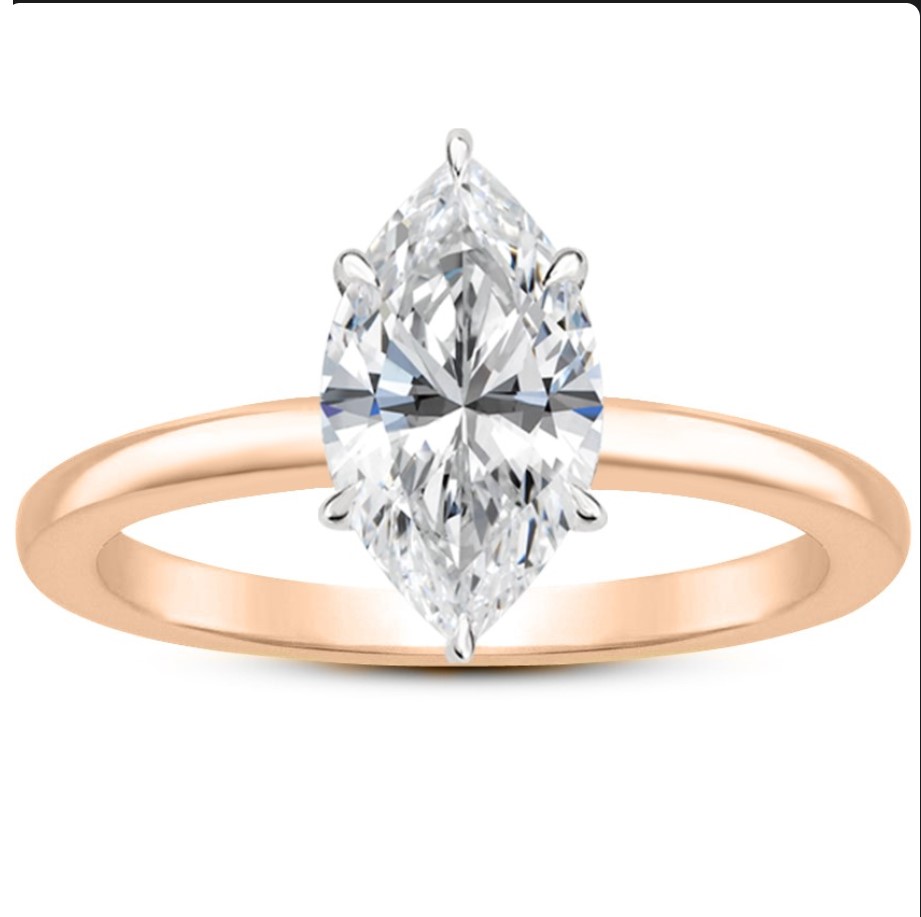
Pear Cut
The teardrop shape of the pear cut is a classic, but you may not realize just how much of a classic. Origins of the pear ring shape can be traced all the way back to the late 1400s. The tapered shape of a pear cut is slimming on the finger and for this reason, it’s customary to wear the point facing away from you. Of course your ring, your rules, so you can wear it whichever way you choose. Just be aware that the point is at risk of chipping like the marquise cut.
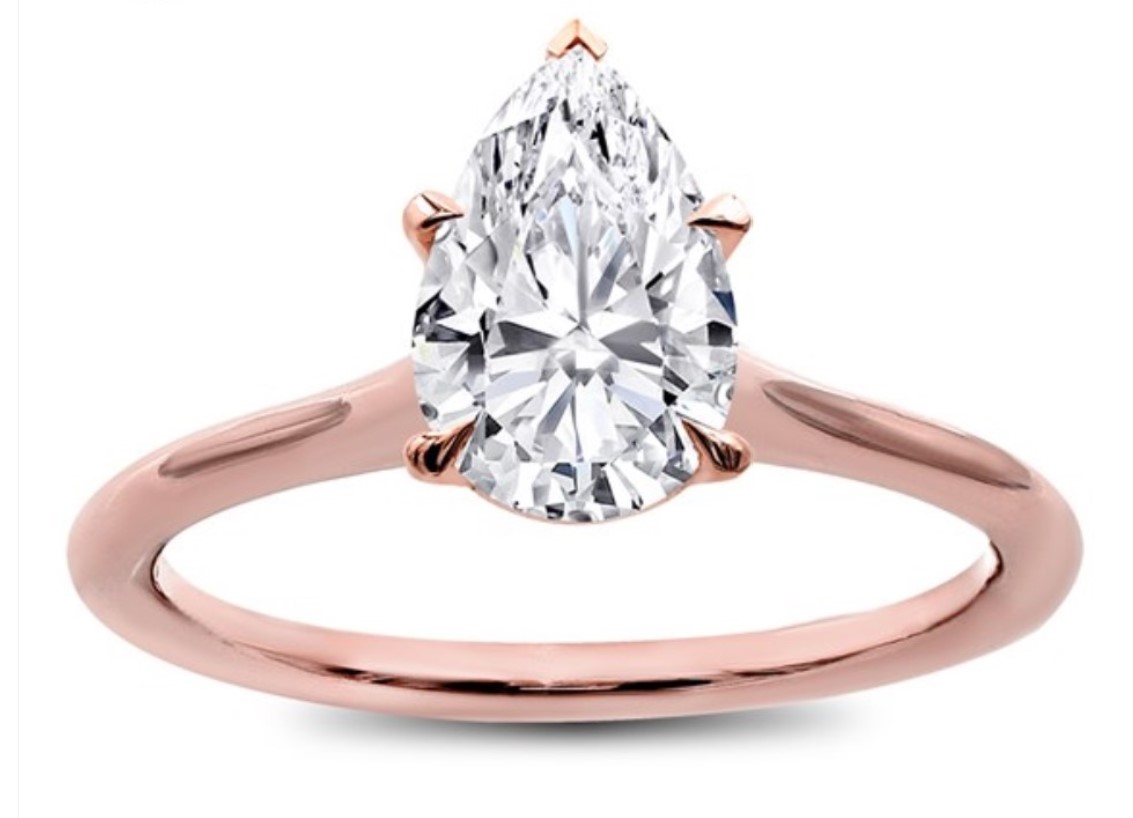
Heart Cut
Heart cuts cater to the true romantics among us. Nothing says “I love you” like the symbol for love itself. Whether it’s a gift from another, or a gift for yourself, there’s no mistaking the feelings behind it. I recently had a friend buy a rose gold ring featuring a heart cut as an expression of self love and appreciation, which I think is a beautiful idea. It’s a good idea to only search for half carat heart diamonds and up, anything smaller than .50 ct will be hard to make out the shape.

Cushion Cut
If you admire the geometric beauty of the princess cut but are worried that the corners may break during your busy day to day, the cushion cut is a great alternative for you. Since the cushion cut features a more streamlined design, it’s better suited for individuals with energetic lifestyles. The cushion cut earned its name from the gentle outline that resembles a plush couch cushion.
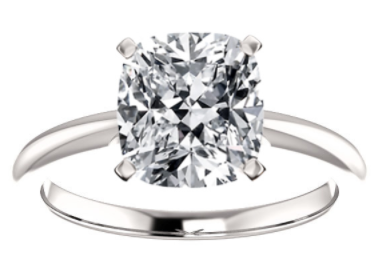
Radiant Cut
The radiant cut’s impressive 70 facets create a beautiful and eye catching light display. Radiant cuts pair well with high energy people due to their flashy nature. Radiant cuts are also a great choice if someone wants the shape of an emerald cut, but a brilliance on par with the round brilliant. A diamond cut jam packed with personality like the radiant cut will always steal the show.
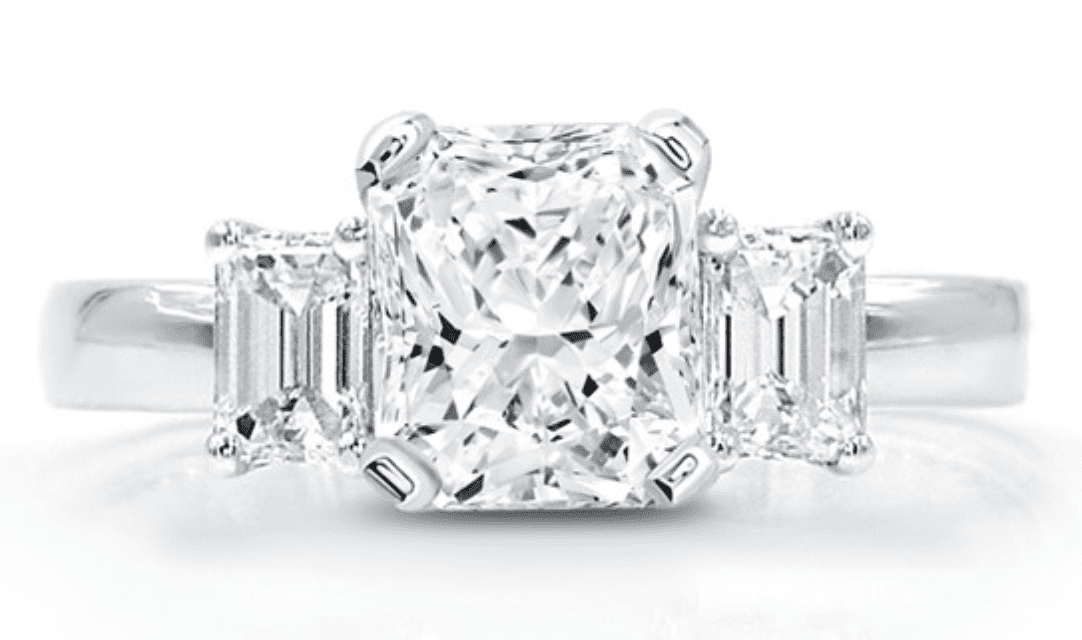
Asscher Cut
I saved the best for last. Personally, I am biased to this outstanding cut. I love how this cut is perfectly symmetrical, no matter which way you divide it. Looking down into an asscher cut diamond is reminiscent of looking through a kaleidoscope. Although this cut isn’t the flashiest, its shape is what makes it stand out. This cut may seem familiar, that’s because it’s basically a shortened emerald cut, but it boasts extra wide corners that almost appear to make the stone look like an octagon.
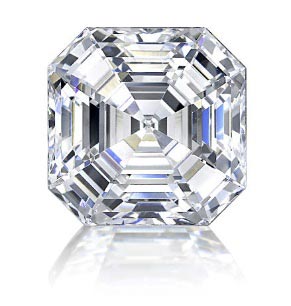
In conclusion, each shape is more than just its outline, but how the facets are arranged and how that plays with light, as well as how a rings shape features complement the wearer’s personality and style. It’s important to take all of this into account to find the diamond cut that’s right for you. Don’t hesitate to chat with one of our gemologists to help guide you in your endeavor to find your perfect diamond.
